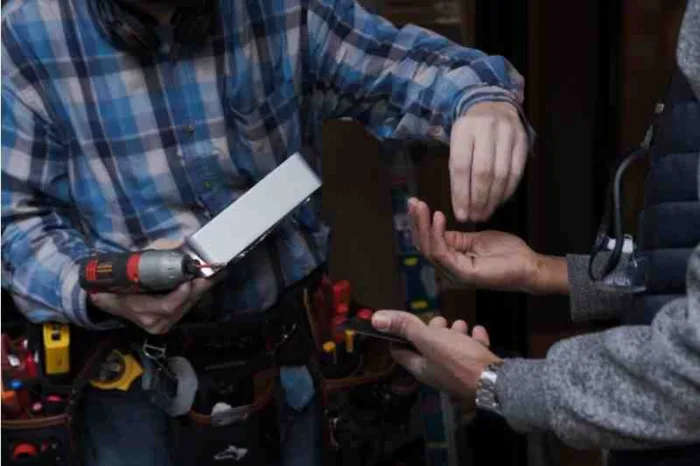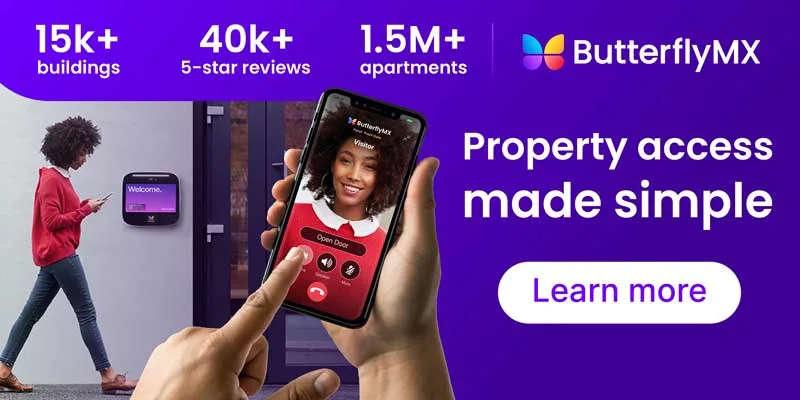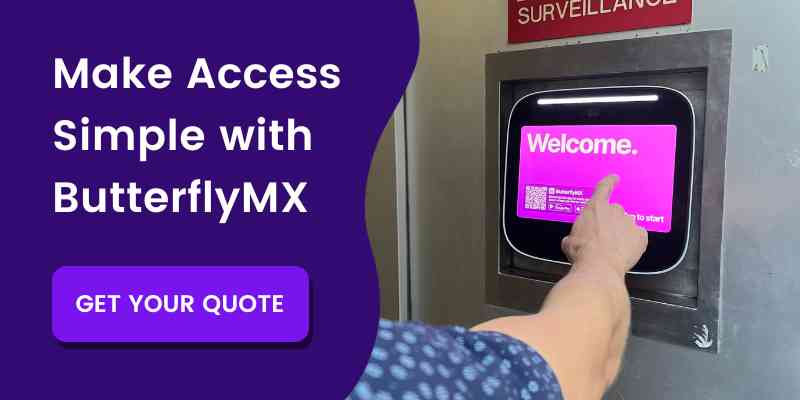Key takeaways
- Convert your old doorbell intercom system if you’re missing deliveries, your hardware is breaking down, or you want to attract tech-friendly tenants.
- Choose one of two options for converting your old intercom into a new one: retrofitting a new intercom or covering and replacing your old intercom with a new one.
- The best way to update your old intercom hardware is to upgrade to a wireless, smartphone-based system.
- Switching to a wireless, mobile-based intercom removes the need for wiring and in-building hardware.
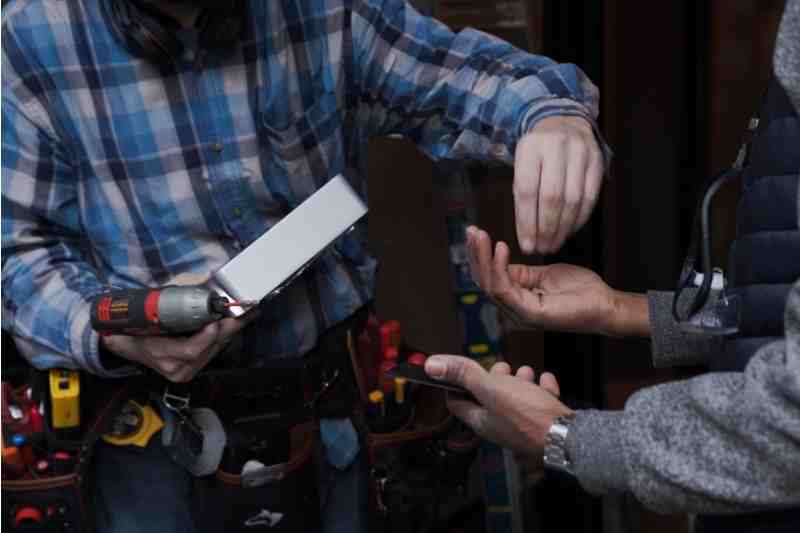
Maintaining secure and convenient building access is one of your most important responsibilities. And intercoms have been helping property staff do just that for decades. But what if your intercom system is outdated?
Consider facilitating better property access experiences by converting old intercom systems entirely.
In this post, we tell you how and when to convert an old intercom system. Then, we go over the signs that your intercom needs to be converted and how to switch to a modern system.
This post covers:
- What can I do with my old intercom system?
- How can you convert your old intercom system?
- How do I choose an intercom system?
- Should you convert your old intercom system?
- How much does it cost to replace an intercom system?
- How should I upgrade my old intercom system?
What can I do with my old intercom system?
Your old intercom can be converted or replaced.
Converting your old intercom system means that you’ll swap an old, outdated system for a newer one with fresh hardware and new features. What this process entails is largely based on how much time and money you’re willing to spend on the new product and the new intercom system installation.
For instance, you may want to make minimal changes, such as just upgrading outward-facing hardware while keeping internal wiring intact. Or, you might go for a complete intercom replacement and install a new system that’s completely wireless.
How long do intercoms last?
Intercom systems can last between 2 and 20 years. Their lifespan can vary significantly depending on many factors, including the type of intercom, its usage, the weather, and how it’s maintained.
Intercom systems’ lifespans vary widely, similar to other electronic devices. Typically, the simpler the device, the longer it may last, but it will have fewer features. Conversely, the more complex the device, the shorter it may last, but it will have more features.
Take the telephone, for example. While old wired telephones may still work today, they don’t offer the touchscreens and processing power modern smartphones have. On the contrary, while you may need to replace today’s smartphones more frequently, they offer many additional features and functionality that a wired telephone cannot deliver.
How can you convert your old intercom system?
If you’re interested in converting your old intercom system, you must first determine if you want to remove the existing system from the property.
You can do so in one of two ways:
Cover & replace
Removing an old intercom system entirely can be expensive. So if you’re interested in a more affordable removal method, consider simply covering up your old intercom and putting new intercom hardware in another place.
How can you cover an old intercom system?
You could use an adhesive or screwed-in cover that matches the exterior of your building. While this step is simple, covering your old intercom instead of performing a more comprehensive replacement might cost you more in the long run.
For example, your old intercom already has an electrical wiring connection built into the walls. And if you cover up that valuable connection in favor of installing another intercom elsewhere, it’ll cost you extra to install new electrical connections in that new spot. The costs of tearing up walls and ceilings for new connections will add up! So instead, repurpose the existing wiring to install your new intercom.
Retrofit
Retrofitting an intercom system consists of replacing some or all of your old intercom’s hardware parts with new hardware. Retrofitting makes financial sense because it allows you to leverage your existing intercom infrastructure when installing a new system.
However, simply swapping out parts isn’t the solution to every intercom retrofit. For instance, what if the wiring that connects each piece of hardware is damaged? If this is the case, you’ll have to rip open the walls to replace or repair that wiring. And it’s almost never a cost-effective solution.
So, what should you retrofit with instead? The answer: Choose a retrofit intercom system that depends entirely on wireless connections.
For instance, consider a next-generation intercom that uses the internet instead of fragile copper wiring to connect residents to the front door. Furthermore, modern systems only require two or three wires: power source, Ethernet cable, and door strike.
How do I choose an intercom system?
Now that you understand what converting your old intercom system entails, let’s discuss your next steps. You’re probably wondering what new system you should replace your old intercom with.
Here are the top three modern intercom systems to choose from:
1. Refreshed wired intercom
Some property managers convert their intercom by replacing the in-unit hardware that tenants use to buzz visitors into the building. Or, they might convert the outdoor station that visitors use to request entry. Both scenarios mean keeping parts of the old, wired system.
Moreover, while replacing this hardware might give tenants the impression that the whole system is brand-new, a mere device refresh neglects one of the most crucial parts of any wired intercom: the wiring itself.
For example, old intercom system wiring connects each piece of in-building hardware to the front door. Unfortunately, when copper wiring degrades, it doesn’t matter how new your exterior hardware is — your intercom simply won’t work!
However, there’s good news:
With today’s wireless systems, you don’t have to run wires through the entire building. Modern intercoms are powered by wireless technology, making them user-friendly for residents while saving you on hefty installation fees.
2. Wireless intercom
Instead of depending on wiring, the best modern intercoms run on wireless methods of communication.
Popular wireless connectivity methods include:
- WiFi
- Cellular networks
- Bluetooth
Compared to wired intercom systems, wireless intercoms reduce maintenance costs by eliminating the need for wired installation and simplifying the device’s maintenance process. However, not all wireless intercoms have visitor management capabilities. While some wireless systems require installing substations in every unit, the best systems operate with tenants’ smartphones and don’t require in-building hardware.
Although wireless intercoms are a step in the right direction, there’s still one more option that gives residents features and flexibility while cutting installation and maintenance costs. And that solution is mobile access control systems.
3. Mobile access control system
The most efficient way to convert your old intercom system is to embrace mobile access control.
Mobile access control systems allow tenants to speak to visitors and let them in with a simple swipe on their smartphones. You get all the benefits of wireless intercoms without the high costs of in-unit hardware installations.
Best of all, mobile access control systems empower tenants to open doors for trusted guests and delivery couriers, even if they’re away from home or the office. So, tenants will never miss a delivery or leave guests stranded outside.
Learn how to install ButterflyMX:
Should you convert your old intercom system?
To keep up with the speed of technological innovations, you should consider replacing your old intercom system with a modern one.
Specifically, you might consider converting your old intercom because:
- You’re having hardware problems
- You’re missing deliveries
- You want to attract tech-friendly residents
You’re having hardware problems
Old intercoms are the source of many resident complaints. For one, outdated intercoms depend on copper wiring — which degrades over time — and will eventually leave tenants with a malfunctioning access solution.
Furthermore, front door hardware and in-unit substations come with separate maintenance concerns, often requiring you to tear down walls to fix wiring issues.
When this hardware breaks down, residents will then have to come down to the building lobby whenever they need to let a visitor in. Consequently, many residents will remember this inconvenience when it’s time to renew their leases.
You’re missing deliveries
Deliveries are a big part of modern life for many residents. And your building’s intercom system can make or break the package retrieval process. Sometimes, a resident might have to chase a package for days — or worse, deal with a stolen or missing package!
If you’ve noticed an uptick in complaints by residents who weren’t alerted about a delivery, it might be time to upgrade your old intercom system. Choose a system with specific features for package couriers, such as delivery PINs, that grant them temporary building access to securely place residents’ deliveries indoors.
You want to attract tech-friendly residents
Even property managers with fully functioning intercoms have plenty of reasons to convert an old intercom system.
For one, investing in a modern intercom system could help attract renters in today’s increasingly tough market. So, you’d want to make your property stand out from the rest of the competition. By embracing the latest property access technology, you’ll demonstrate your commitment to facilitating the best resident experience and providing excellent service.
Millennials and Gen Z now make up the majority of today’s renters. So, smart property managers will cater to their tech-friendly preferences and embrace smart apartment technology — including smartphone-based intercoms.
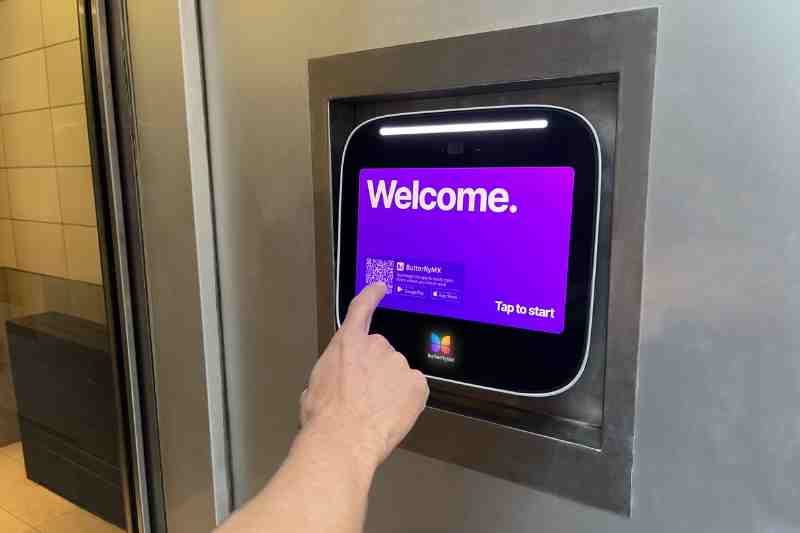
How much does it cost to replace an intercom system?
Intercom system hardware usually costs between $1,500 and $5,000. In addition to the hardware, professional installation typically costs up to $3,000.
However, the cost of replacing and installing a new intercom system may vary depending on the type of system you choose.
How should I upgrade my old intercom system?
You should upgrade your intercom with the ButterflyMX video intercom.
ButterflyMX offers modern yet inexpensive solutions that simplify access while enhancing security and convenience.
The ButterflyMX video intercom has state-of-the-art features like:
- Top-rated mobile app. The mobile app empowers users to open gates, doors, and access points with ease from a smartphone.
- 156 degree wide-angle camera. A wide-angle camera enables users to view all building activity with crystal-clear clarity. So, you always stay in the know of who’s entering your property.
- Audit logs. Access time-and-date-stamped photos of all entry events from a mobile app or web dashboard.
- WiFi and RFID connectivity. Enjoy versatile connectivity options that empower users to open doors with their smartphones or an RFID key fob.
- Delivery passes for service providers. Easily send temporary delivery passes to couriers and service providers that empower them to securely drop off parcels.
- Visitor Passes for guests. Temporary Visitor Passes empower guests and service providers to securely access your building without a tenant needing to physically let them in.
